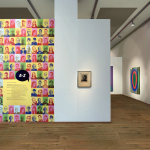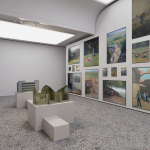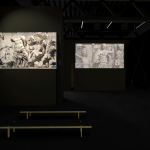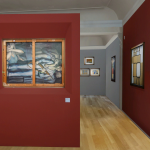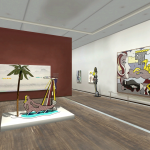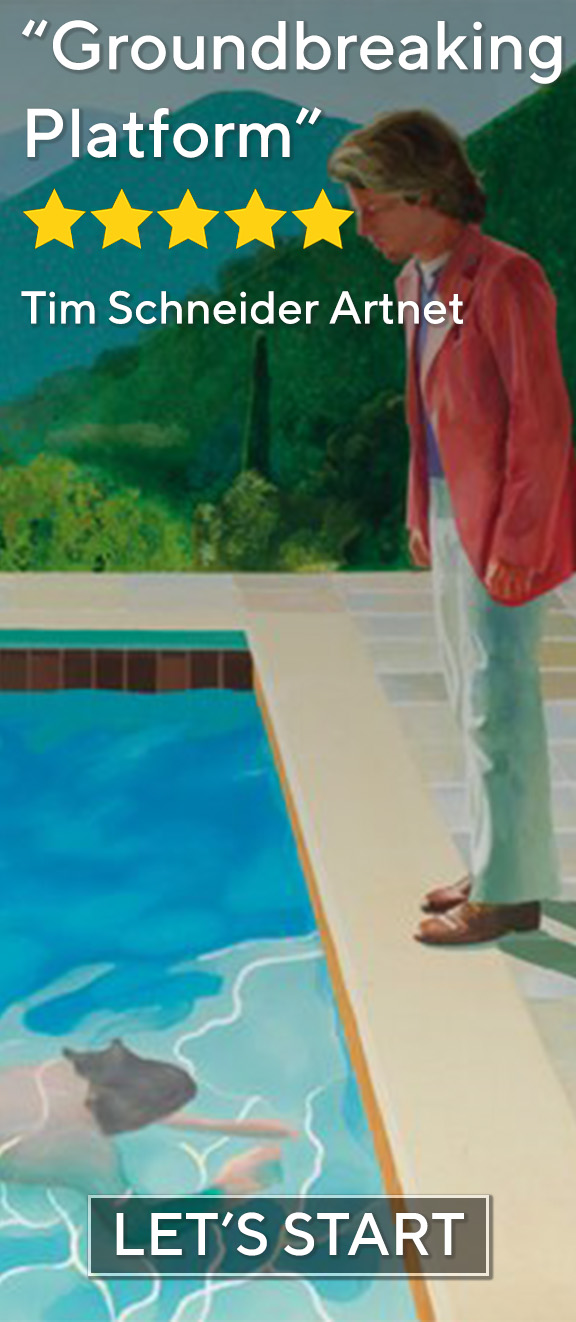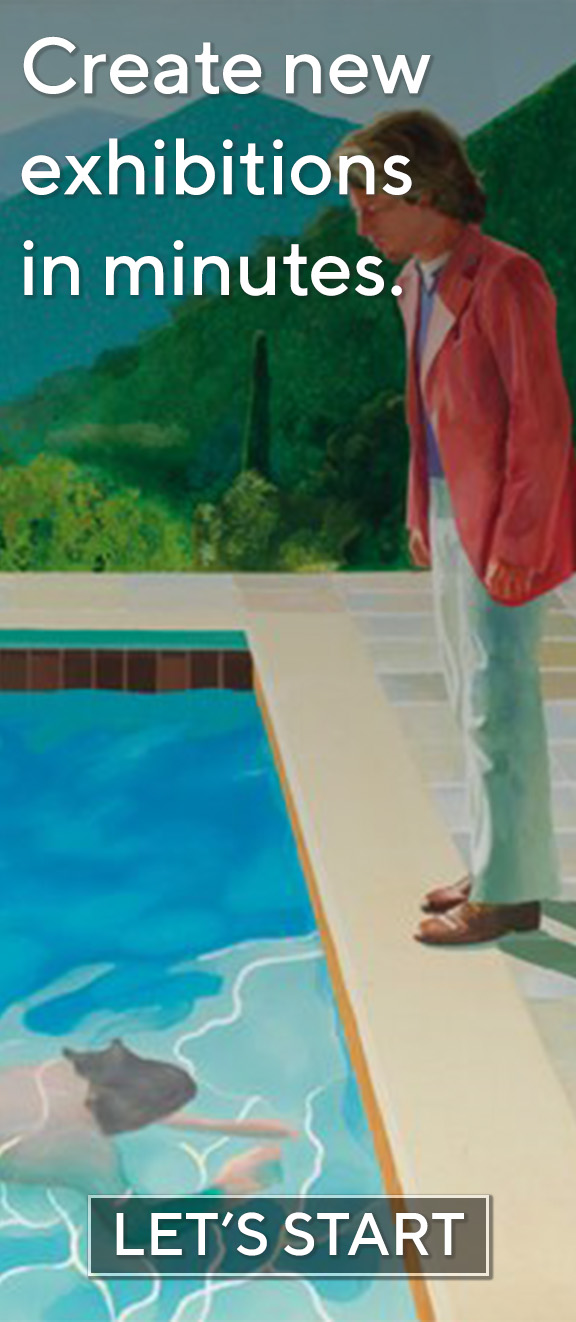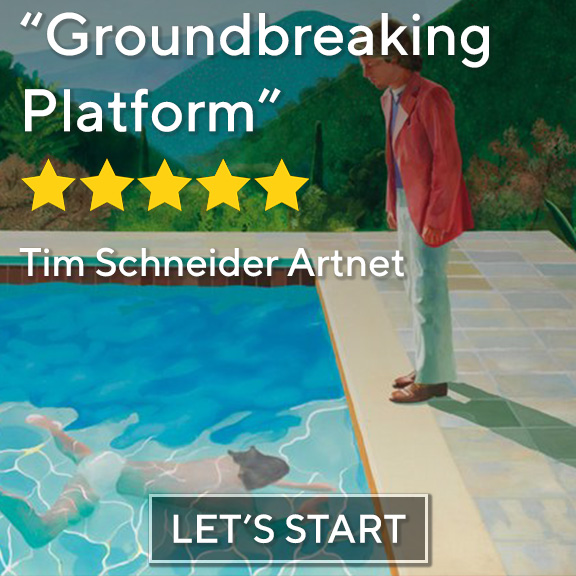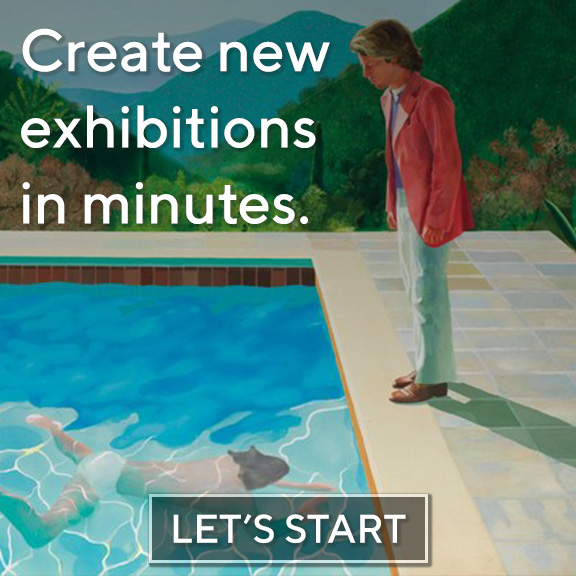First, virtual exhibitions are online and exist as part of and within the global computer network called the internet. Second, they are Web-based, which means that they are designed, mounted, presented, and viewed on the World Wide Web, a network system whose graphical interface makes possible the inclusion of various forms of media. Third, virtual exhibitions are hyper-textual, an aspect which collects and connects various, hyperlinked texts and can produce elements of non-linearity, de-centeredness, and intertextuality. Finally, they are dynamic, a feature which renders them more perpetual work-in-progress than static collections.
David Silver,1997.
It might feel like the pandemic changed everything in the blink of an eye for the art world, as everything from the real world suddenly moved to the Internet, but actually it just accelerated a shift that has been happening for a long time now.
The clear meaning of this is that things won’t go back to the way they were before once the dust settles, because they are not dependent on one reason, but the outcome of many factors. These factors go beyond the evident technological developments, and include sociocultural terms of demand and supply. This is not to be understood through the lense of sales numbers: it’s about what kind of artworks the viewer wants to see, and how, emphasis on the ‘how’, which is a question that should be discussed on the grounds of the philosophy of art as visual perception belongs to the aesthetics.
When we are talking about perceiving digital images, we are not referencing the resolution of the digital reproductions of an artwork existing in the physical world, at least not anymore. According to an article by David Silver from 1997, there are 3 types of online exhibitions available on the Internet based on their relation to reality (he calls them the virtual version, the missing wing, and the hyperreal-site – we will get back to these later), and the first type (the oldest hence the simplest) already came over the “How many pixels do we need to actually see something?” question after some tweaking.[1]

Again, he wrote this in 1997, calling online exhibitions virtual exhibitions since they are synonyms, noting that the phenomenon is “hardly new”, as curators started using the World Wide Web’s ability to publish online multimedia presentations in 1994, moving their already existing electronic collections from floppy disks to URLs. Computers have been involved in creating and archiving art since the 1970s. So the perception of digital reproductions in an online (virtual) gallery does not stand or fall on technology, but on two completely different things that brought it alive in the first place: theory and practice.
By practice we mean the problems that needed to be solved and the benefits we discovered along the way, but to appreciate these properly, not as some guilty pleasures, we have to create a philosophical framework where an online exhibition can be accepted as more than a mere reproduction, a flat copy.
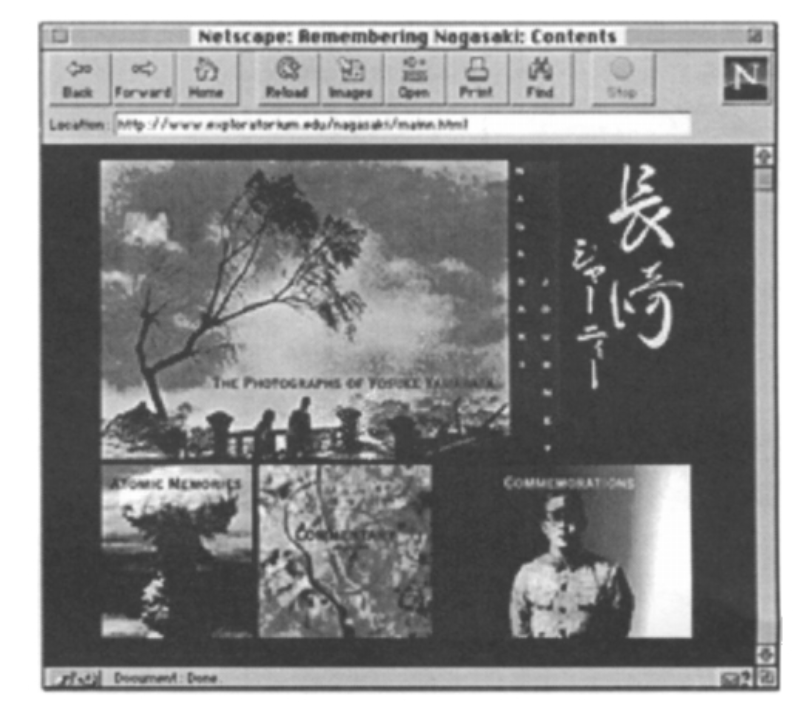
Remembering Nagasaki, 1995 (Exploratorium, San Fransisco)
This might sound hard or even impossible to the sceptics, even though everything needed to it was written in the last century, but it’s quite easy if we start at the heart of the problem, which is not even our aversiveness to virtuality when it comes to art, but how we esteem copies in general.
We tend to mix these up because they are rooted in the same human instinct that desires authenticity: virtuality might seem ‘not real’, because it’s not ‘here’ in the sense of physical reality, and we deem copies and reproductions ‘fake’, because they are not ‘originals’. Mind you, reproductions never pretend to be the actual thing, so comparing them to forgery is uncalled for. This is a rather conservative way of defining a thing’s worth, even in the art world where uniqueness is held as a catchword.
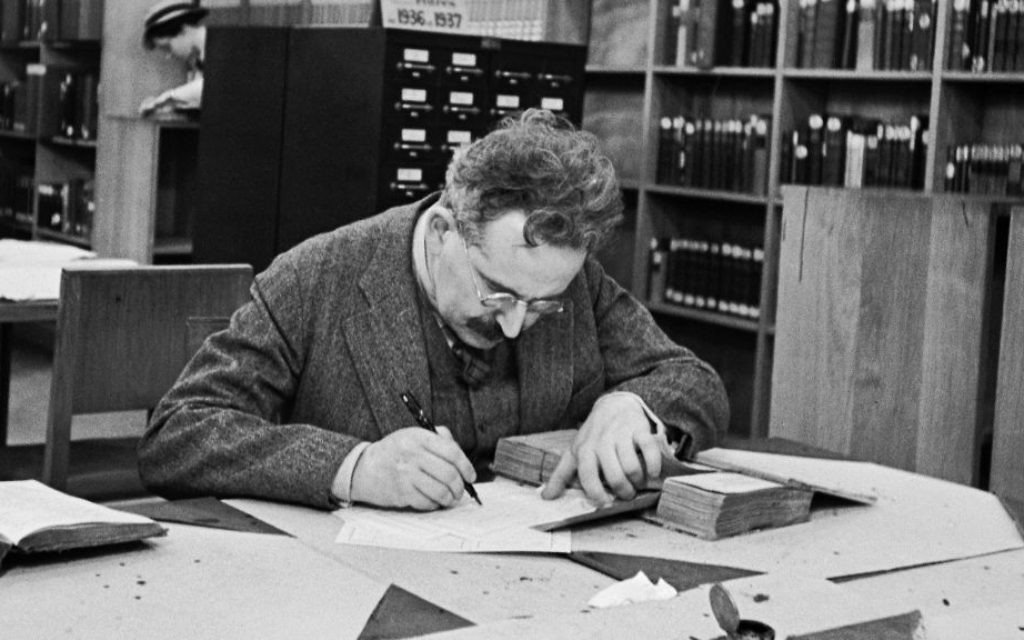
(© Gisèle Freund – RMN, image provided by IMEC, Fonds MCC, Dist. RMN-Grand Palais / Art Resource, New York)
Let’s start with revisiting what we think about reproductions. Probably the most important essay ever written on the subject is Walter Benjamin’s The Work of Art in the Age of Mechanical Reproduction from 1935.
“Even the most perfect reproduction of a work of art is lacking in one element: its presence in time and space, its unique existence at the place where it happens to be”,[2] he wrote. This is what he defines as aura: “To follow with the eye – while resting on a summer afternoon – a mountain range on the horizon or a branch that casts its shadow on the beholder is to breathe the aura of those mountains, of that branch.”
At first glance, this slams the chance of reproductions ever being taken seriously, but if we read carefully, we find a way out: he is talking about mechanical reproductions of artworks (prints, copies, photographs), and we are talking about digital reproductions of complete spaces.
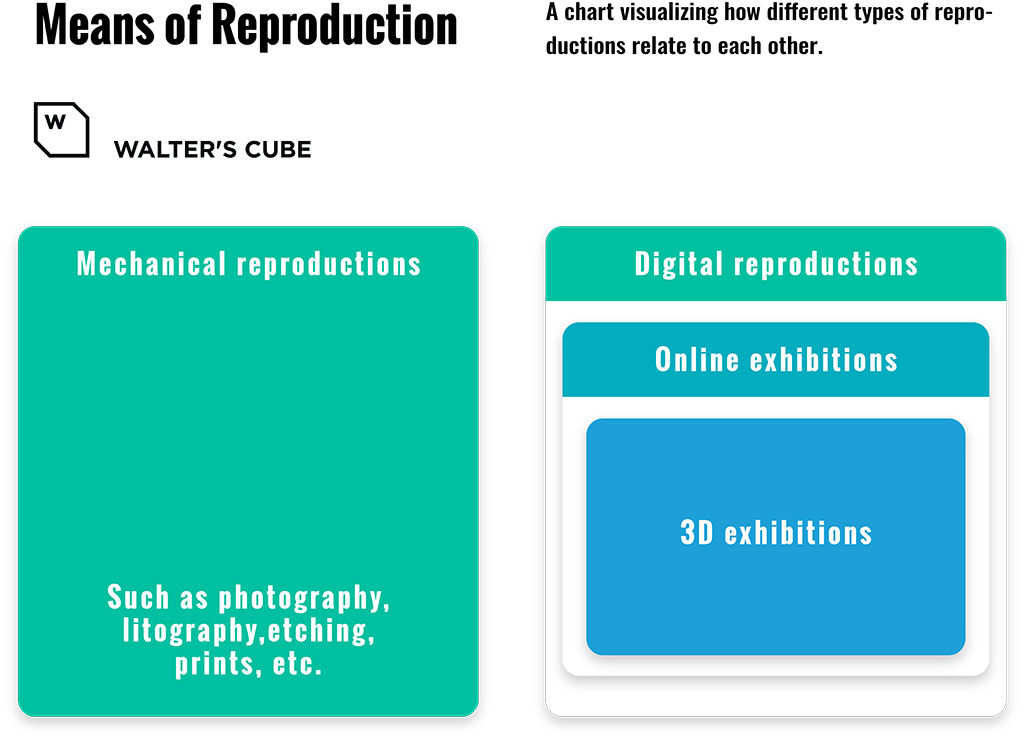
The difference is immense for two reasons: one, technological advances Benjamin couldn’t have foreseen come into play, two, digitized spaces provide the distance he thought to be one of the qualifying elements of aura. If we are talking about 3D exhibitions (always keep in mind: every 3D exhibition is an online exhibition, but not every online exhibition is a 3D exhibition), where we can walk around in a simulator as we like, not just look around from a fixed point like in a 360° photograph, we even get time: both of the things making up the aura.
After coming to terms with digital reproductions, we have to face our aversion towards virtuality. Like we said, we tend to be cautious of things we can’t quite comprehend, or in this case, touch, because we have an evolutionary reaction that suspects our physical senses are being cheated, so danger must be lurking around.
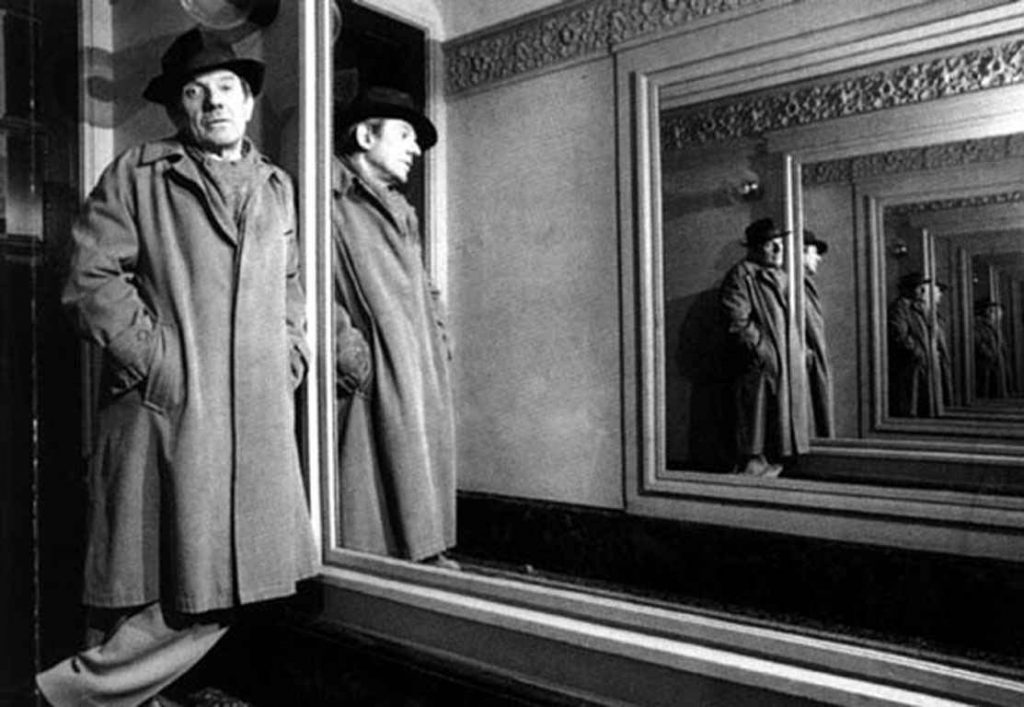
But virtuality is not a scam, and nobody could put it more beautifully than Gilles Deleuze did in 1968: “The virtual is not opposed to the real but to the actual.”[3] By actuality, he means the here and now of the physical world: just like closing my eyes won’t stop an object from existing simply because I can’t see it at the moment, an object far away from me won’t stop existing because I’m not looking at it – this is the answer to the age-old philosophical question “If a tree falls in a forest and no one is around to hear it, does it make a sound?”
So I can behold a digital reproduction that’s authentic due to its aura, and I can do that virtually because a virtual image is real on its own right. Of course, this has different levels, which can be understood through the 3 types of online exhibitions Silver distinguished.
The virtual version is a digital twinspace: the gallery space with the artworks scanned and digitized without any change, making virtuality mirror reality.
The missing wing is the virtual version plus extra space and information, more than a replica, making the virtual gallery bigger than the physical one to accommodate more artworks, making virtuality an extension to reality.
The hyperreal-site has no physical original: the exhibition exits exclusively in virtuality, leaving reality behind. This does not mean that virtual exhibitions should or would replace physical ones, only that they can coexist, creating richer content the viewers can and want to enjoy.
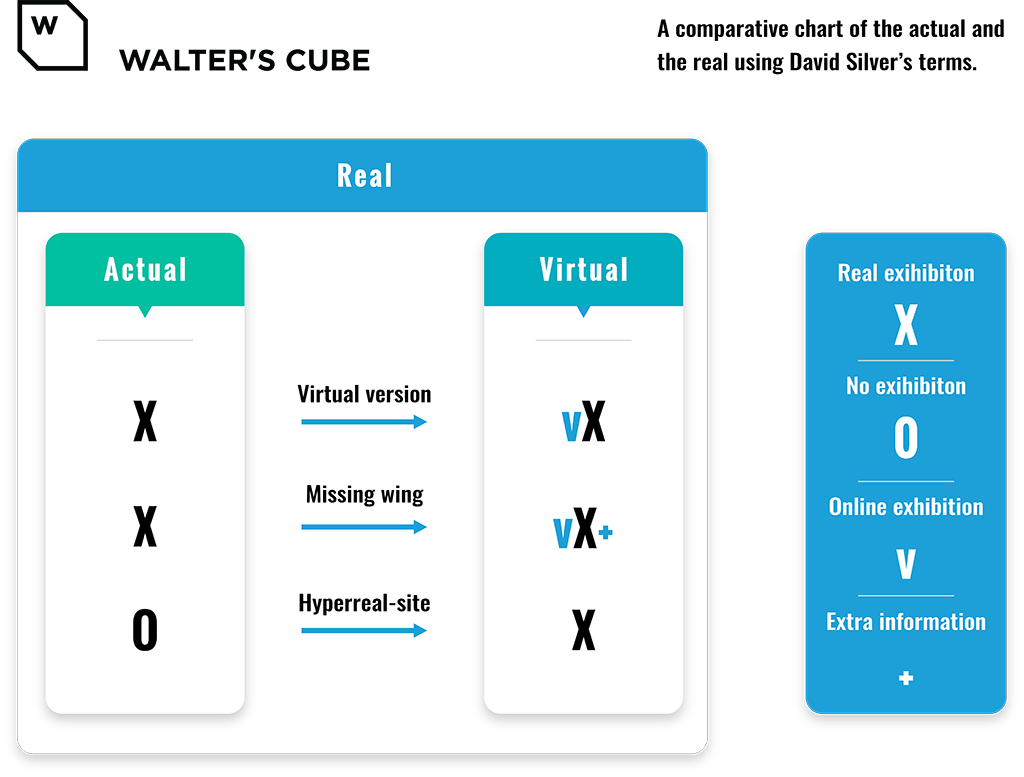
- David Silver. “Interfacing American Culture: The Perils and Potentials of Virtual Exhibitions.” American Quarterly 49, no. 4 (1997): 825-50.
- Walter Benjamin. “The Work of Art in the Age of Mechanical Reproduction.” In The Work of Art in the Age of Its Technological Reproducibility, and Other Writings on Media, translated by Edmund Jephcott, Rodney Livingstone, Howard Eiland, and Others, edited by Micheal W. Jennings, Brigid Doherty, and Thomas Y. Levin. (Cambridge/London: The Belknap Press of Harvard University Press, 2008), 19-55.
- Gilles Deleuze. Difference and Repetition, translated by Paul Patton, (New York: Columbia University Press, 1994).
The thumbnail is a screenshot from the 3D model of Ludwig Museum’s exhibition titled Hidden Patterns, The Language of Network Thinking from Barabásilab made by Walter’s Cube.


